Francis Kéré
Less is More in an African Way

Diébédo Francis Kéré’s loam architecture forms a cultural bridge between Africa and Germany – not as an export, but as a project of mutual exchange.
Francis Kéré erected his first building while still studying architecture: a school in his native village of Gando in Burkina Faso. At that time, his German fellow students made fun of his interest in loam huts in Africa. Today, he is one of the most sought-after protagonists of the international architecture scene: as guest professor, speaker, exhibition designer and architect. Small-scale schools and medical facilities made from simple, locally-available materials are still the main focus of his work, but his portfolio is far more varied: it encompasses the continuing development – in collaboration with artist Christoph Schlingensief – of the Opera Village in Laongo, the design for the National Assembly building in Ouagadougou (the capital of Burkina Faso), and a protective shelter for the UNESCO World Heritage site Meroe in Sudan. In Germany, he is at work on the re-purposing of former military barracks’ grounds in Münster und Mannheim into residential quarters, and is planning a temporary theatre at the Tempelhofer Feld in Berlin.
Radical and simple
Despite this meteoric career, Kéré has remained what he always has been: closely bound up with his own village of Gando, curious about the world, and full of energy when speaking about his projects or initiating new ones. In 2003, he published his first building in an international architecture journal from Germany, a year later he was distinguished with the Aga Khan Award.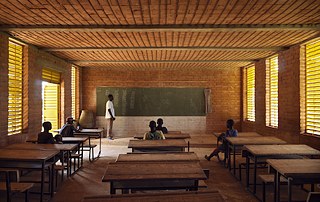
Natural and social
And more importantly: they combine – by including residents in the building process – highest social quality with sustainable climate concepts. Natural ventilation and pleasant room comfort without elaborate technology, even in the hottest climate zones, are part and parcel of the standard of his outstandingly conceived and designed architecture. Kéré has now diversified and expanded his architectural repertoire. Above all, he is increasingly succeeding in realising not only individual houses, but entire ensembles, which, like farm houses in Burkina Faso, convey comfort and security in the midst of the steppe landscape.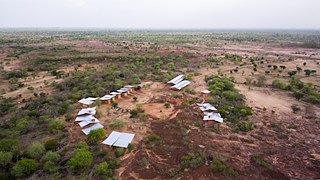
Regional and international
Concurrently, the previously prevailing Eurocentric paradigm of the international art scene was expanding into a globalised post-colonial perspective: in 2002, Documenta 11 in Kassel was curated for the first time by Nigerian curator and author Okwui Enwezor, who demanded a new take on what is considered “high culture,” and confronted contemporary art with so called popular/folk culture. It was due to his influence that, among other things, initially regional awards such as the Aga Khan Award for architecture in countries shaped by Islam that has been offered since 1980, are meeting with increasing interest in the West.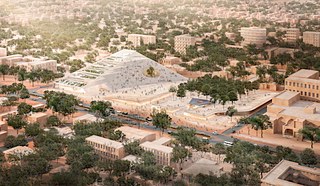
Simple and unpretentious
Francis Kéré loves to bring the message of his work out into the world. In 2013, he presented his work as part of the internationally renowned TED (Technology, Entertainment, Design) conferences. Exhibition designing is also one of his central interests. As early as 2008, he participated in the exhibition Updating Germany, the German contribution to the Architecture Biennial in Venice. In 2016, with Colourscape, he filled the entrance to the Philadelphia Museum of Art with brightly-coloured cord lanterns. The exhibition Radically Simple in the Architekturmuseum of the TU Munich in the Pinakothek der Moderne is the first large-scale overall view of his work from its beginnings in his native village to his projects in Germany and China.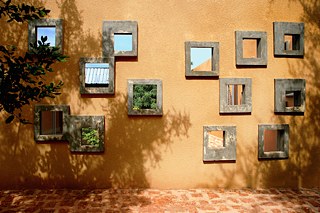
Exhibition Francis Kéré. Radically Simple
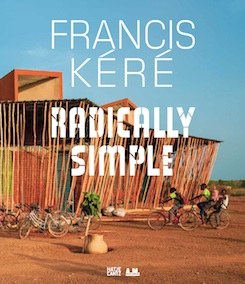
Pinakothek der Moderne until 26.03.2017
www.architekturmuseum.de
Katalog Hatje Cantz
www.hatjecantz.de